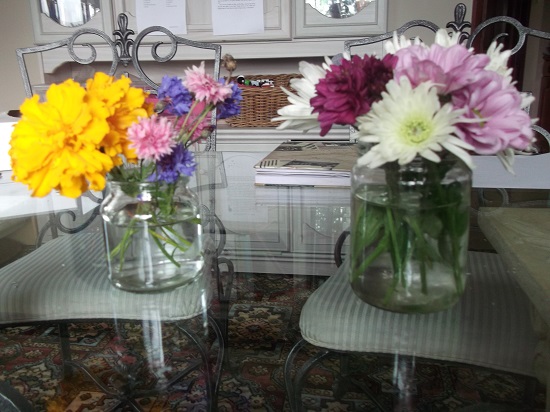Before this study, I was under the mistaken impression that 'Aster' referred to a specific flowering plant, like 'Chrysanthemum', or 'Daisy'. I really had no idea that Aster's referred to a group of flowers that all shared certain features.
Before embarking on our study of Asters, we followed Miss Comstocks advice to first study the Sunflower.
"... This lesson should follow that on the sunflower." - pg 507
In this lesson we got to grips with composite flowers. We learned about the ray or banner flowers along the outside which attract insects, the central disc flower, which is actually many little flowers together, each with it's own anther and stigma - all which attend to the matter of pollination. As most of our sunflowers have already finished blooming, we were able to look at the seeds that have been formed as a result of pollination - and which the birds in our garden are currently enjoying!
After we had observed the parts of the sunflower - which illustrates composite flowers beautifully because of their large flower heads, we were more able to appreciation today's lesson on Asters
"Have the pupils collect as many kinds of asters as possible, being careful to get the basal leaves to take noes on where each kind was found -" - Handbook of Nature Study pg 507
We didn't have to go to far to gather Asters today, we have quite a few in our garden - which I had no idea of before! We collected Marigolds, Cornflowers and Chrysanthemums and brought them inside. (BTW, because I really had no clue which flowers fell into the Aster group, I used the wonderful Internet to 'ask' if 'such-and-such' was considered an Aster LOL)
Our Marigold flower was an excellent specimen to work from as the little flowers in the disc flower were big enough for us to see clearly ....
The girls picked out a disc flower each and looked at it closely through the magnifying glass...
They also decided to cut one of the flowers in half so that they could draw a cross-section...
They drew some beautiful representations, and Miss J-L copied a verse of the poem,
"Flowers" by Harry Behn
So we let the honey
be theirs, but the flowers
we cut to take
in the house are ours,
not yours if you please,
you busy bees.
Here are the girls pages...
Miss V-L
and Miss J-L
This was honestly a delightful and simple study. It echoed my desire to keep nature study simple (as per Pocketful of Pinecones - my inspiration). This was not a long drawn out lesson at all. We simply picked flowers, had a few minutes of discussion while the girls drew in their journals.
Have a great weekend everyone :o)
Blessings,
Shirley
Joining Barb for the OHC Blog Carnival.










No comments:
Post a Comment
Thank you for taking the time to comment. I appreciate each and every one left for me.